1. Each city begins to reserve medical care
On July 30, the Ministry of Finance issued a "Notice on Issuing a Budget for Subsidy Funds to Support the Construction of the Emergency Material Security System" (hereinafter referred to as the "Notice"), requiring the financial departments (bureaus) of all provinces, autonomous regions, and municipalities to implement and arrange part of the funds It is used to support the construction of local emergency supplies guarantee system.
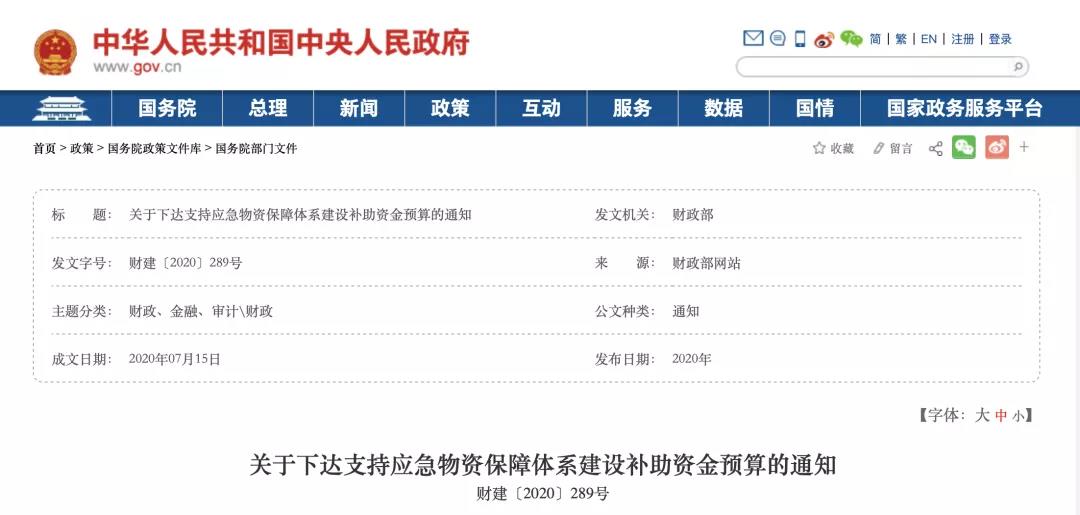
The notification requires that funds for the construction of the emergency material guarantee system are used to support local governments in accelerating the completion of emergency material guarantee shortcomings, and improve the central and local overall arrangements, hierarchical storage, and emergency material guarantee systems that can be uniformly dispatched when major emergencies occur.
All provinces, autonomous regions, and municipalities directly under the Central Government should focus on the three key tasks of further enriching and improving special emergency government reserves, vigorously supporting the construction of capacity backup, and enhancing the emergency conversion capacity of medical supplies and equipment, and coordinate and integrate existing reserve resources to further enrich. Improve the variety and scale of special emergency government reserves, and provide subsidies for the purchase, rotation, management and interest expenses of special medicines for the prevention and treatment of major infectious diseases and medical protection material reserves;
Efforts to improve the production and mobilization capacity of public health emergency supplies, support state-owned and private enterprises to carry out necessary production capacity backup construction and enhance emergency conversion capabilities, and form a sustainable medical supplies and equipment supply capacity.
2. 30 billion allocated to provinces
This time, the central government’s financial support for the construction of the emergency supplies guarantee system has a total provincial budget index of 30 billion yuan. The distribution is as follows:
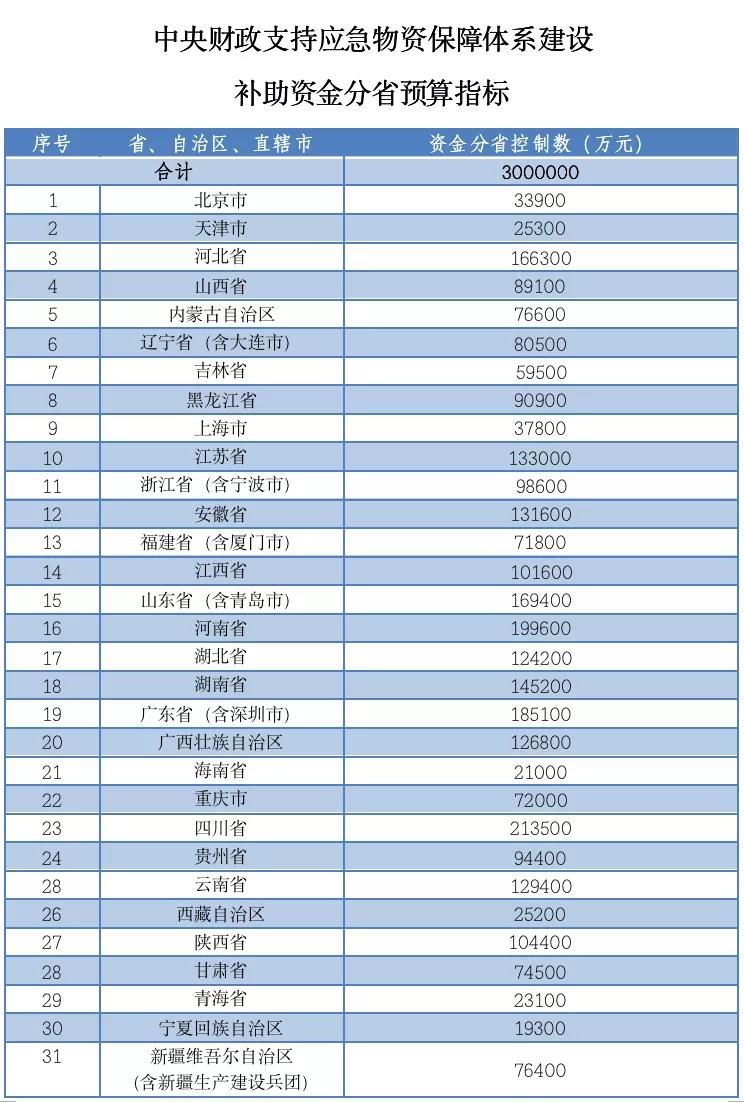
(Data source: official website of the Ministry of Finance)
3. All cities reserve medical supplies
From the reference format of the detailed plan table for the construction of the emergency material guarantee system announced by the Ministry of Finance, it can be seen that this reserve involves medical treatment drugs, medical protective materials, and medical treatment equipment.

(Image source: official website of the Ministry of Finance)
A few days ago, the National Health Commission and other three departments issued the "Public Health Prevention, Control and Treatment Capacity Building Plan" (hereinafter referred to as the "Plan"), and issued all provinces, autonomous regions, municipalities directly under the Central Government and cities under separate state planning, Xinjiang Production and Construction Corps Development and Reform Commission, and Health Commission. The Bureau of Traditional Chinese Medicine requires the relevant departments to comply with it.

It is mentioned that medical institutions must stock up-quality and sufficient quantities of medical masks, gowns, goggles and other protective equipment, generally no less than 10 days.
At the same time, each city is required to renovate and expand 1-2 existing medical institutions. All regions need to transform and upgrade major epidemic treatment bases.
Combined with the construction of the national emergency team, each province will build 1-3 major epidemic treatment bases to undertake the task of centralized treatment of critically ill patients and centralized storage of emergency materials, which can respond quickly when major epidemics occur, effectively improve the cure rate of critically ill patients and reduce illnesses. Death rate.
The construction content includes: Strengthening the construction of the intensive care unit (ICU). In principle, 10-15% (or no less than 200) of the hospital's established beds will be set up for intensive care beds, and a certain number of negative pressure wards and negative pressure operating rooms will be set up.
Configure cardiopulmonary resuscitation, ventilator, extracorporeal membrane oxygenation (ECMO) and other necessary medical equipment according to different scales and functions;
Build convertible wards, transform existing wards and imaging inspection rooms, and meet the protection requirements of three zones and two passages under wartime conditions. Water and electricity will be transformed in accordance with the requirements of the critically ill centralized treatment center;
Improve the conditions of specialized facilities such as respiratory and infection; reserve a certain amount of materials for the treatment of critically ill patients, general patient monitoring, and shelter hospital equipment.
List of reference stocks of emergency treatment supplies for major epidemic treatment bases
(Tentatively, calculated based on a single base)
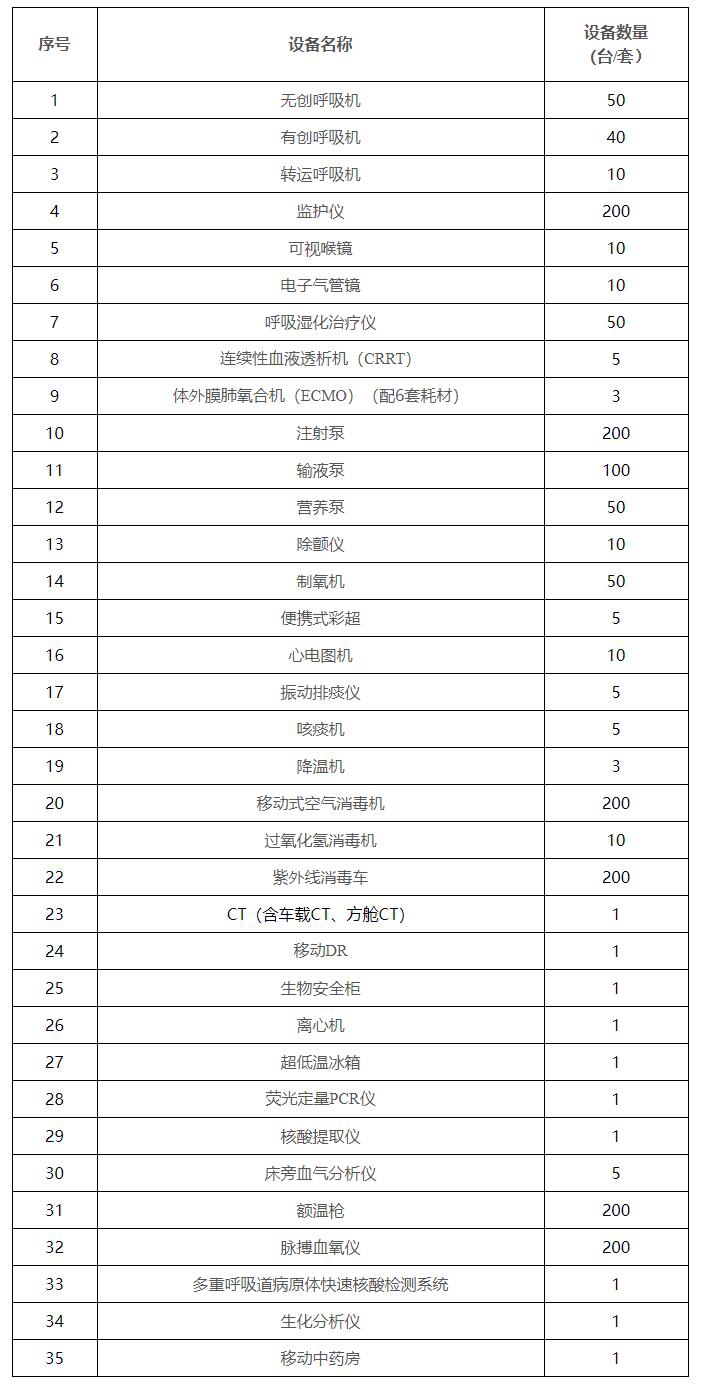
4. Primary hospitals begin to deploy
The National Development and Reform Commission emphasizes the need to comprehensively improve county medical and health service capabilities, strengthen the construction of regional medical centers, and upgrade and transform major epidemic treatment bases.
What medical equipment is urgently needed at the grassroots level?
The National Health Commission has issued the "Guidelines for the Evaluation of the Service Capacity of Township Health Centers (2019 Edition)" and the "Guidelines for the Evaluation of the Service Capacity of Community Health Service Centers (2019 Edition)", which published 36,000 township health centers nationwide and 35,000 community health services. The latest version of the center's medical equipment configuration standards.Community health service centers and township health centers should be equipped with DR, color Doppler ultrasound, automatic biochemical analyzer, blood coagulation meter, twelve-lead electrocardiograph, electrocardiograph, remote electrocardiogram monitoring instrument, air disinfection machine, ventilator, Holter monitor, ambulatory blood pressure monitor and other equipment.
Attached: The latest "County Hospital Medical Equipment and Facilities Basic Standards"
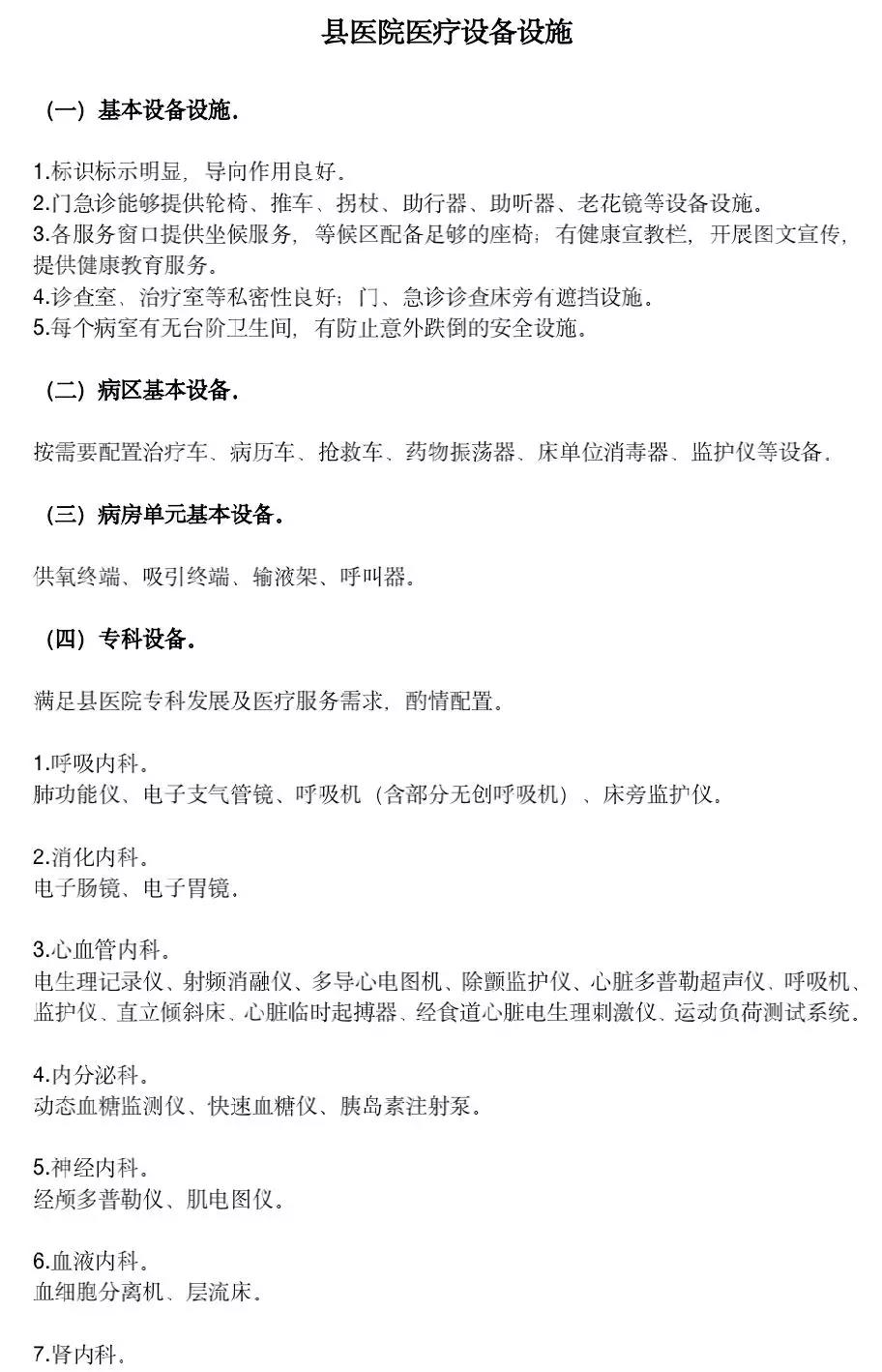
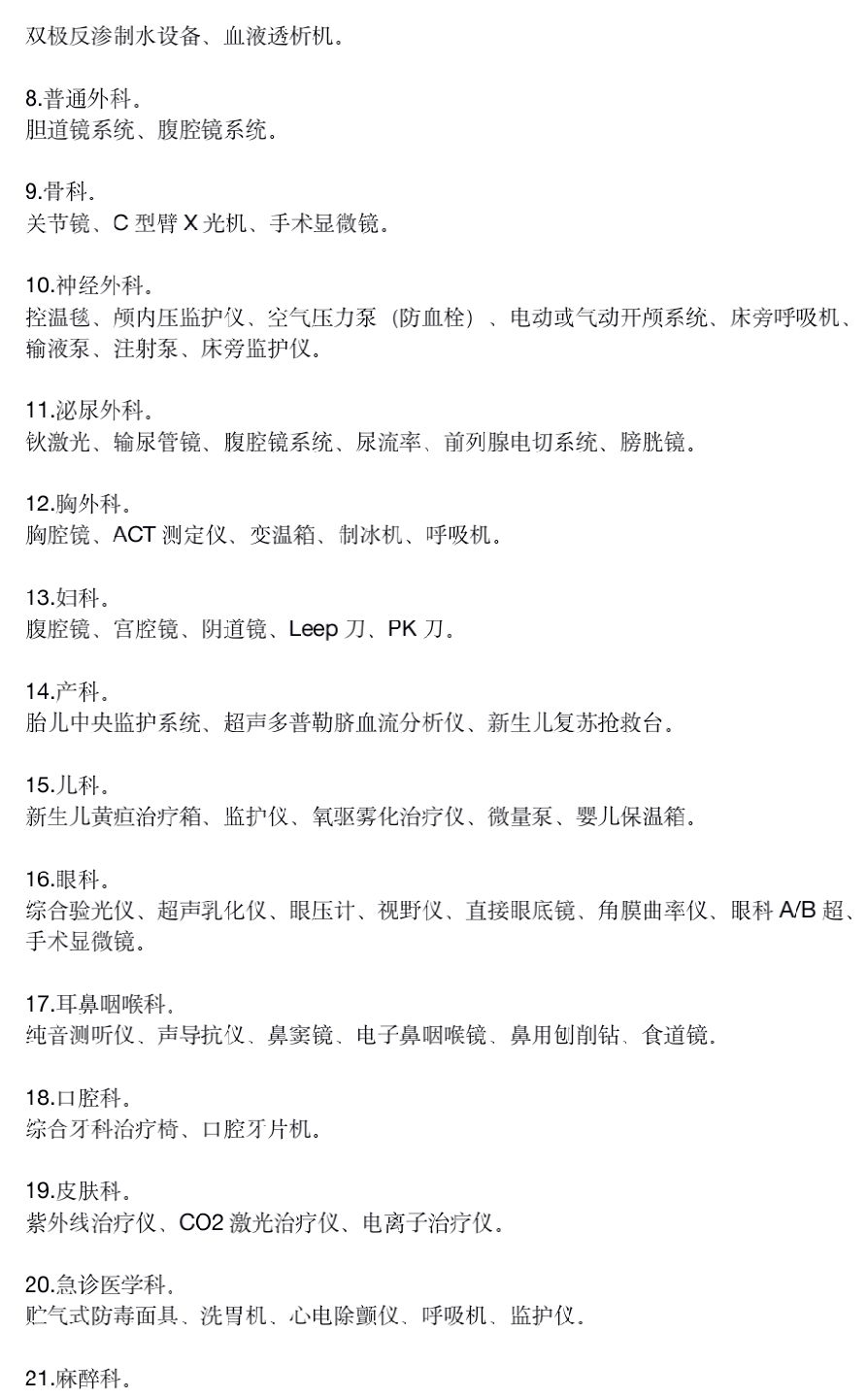
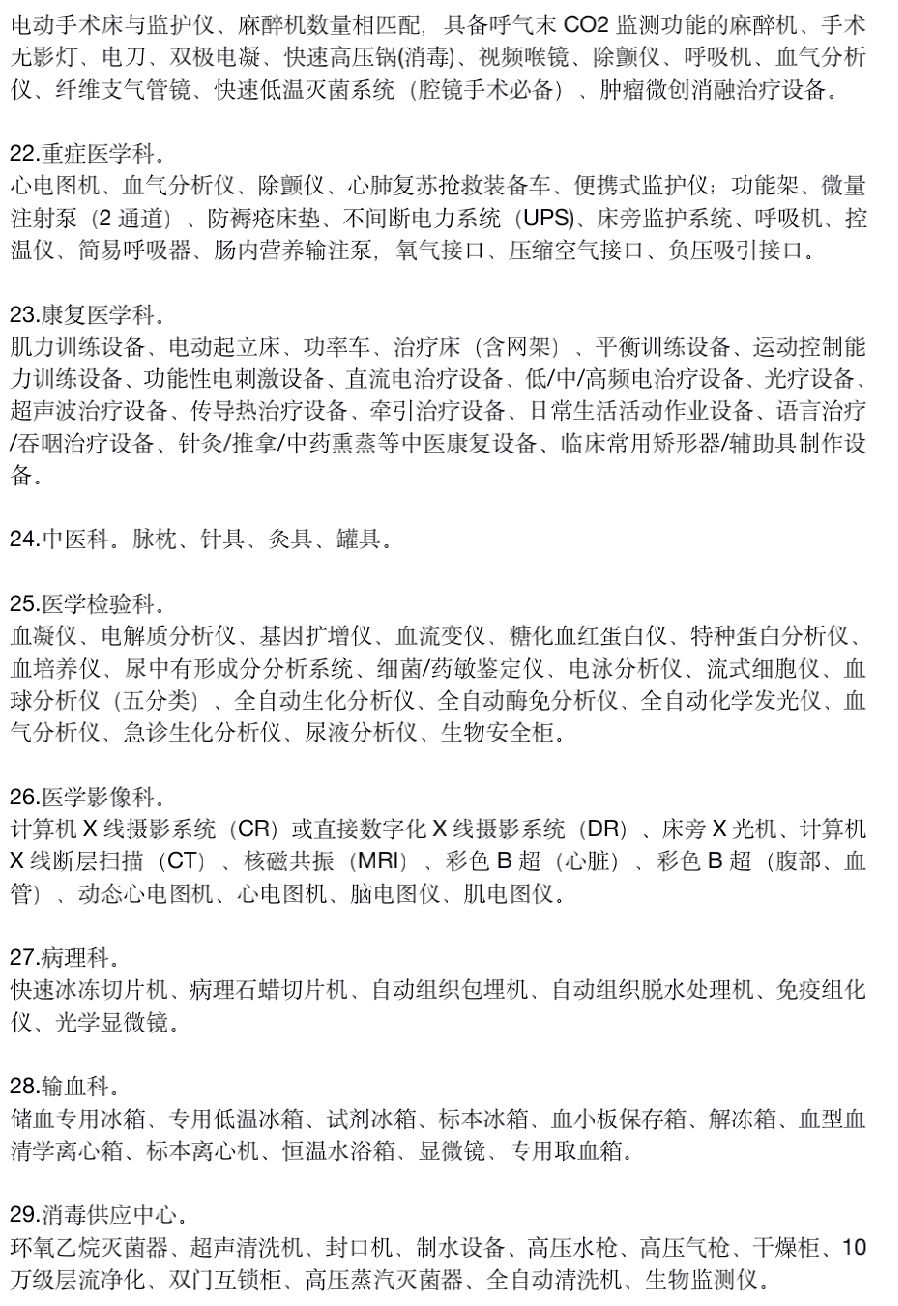
 Location :
Location : 
 Tel: +86-0791-85352308 / 85352311
Tel: +86-0791-85352308 / 85352311 Fax: 0791-85352311
Fax: 0791-85352311 Address: Next to 316 National Road, Xinju, Yanxiang, Changshan, Jinxian County, Nanchang City, Jiangxi Province
Address: Next to 316 National Road, Xinju, Yanxiang, Changshan, Jinxian County, Nanchang City, Jiangxi Province
